Hello fellow travelers and science lovers, I bring you this interesting post where we will live the experience of being able to walk through a neighborhood that was literally "swallowed" by oblivion but that was unearthed in the 70s! (the Almohad neighborhood) a city that was considered lost and that today is an entire urban complex of the Arab civilization (Moors) who inhabited Portugal after the fall of the Roman Empire, in addition to beautiful photos we will learn about the way of coexistence of the Arabs, we will also be able to see "live" a replica of a house.🧠🏰🌏
Hola amigos viajeros y amantes de la ciencia, les traigo este interesante post donde viviremos la experiencia de poder pasear por un barrio que fue literalmente "tragado" por el olvido pero que en los años 70 fue desenterrada! (el barrio almohade) una ciudad que se consideraba perdida y que hoy en dia es todo un complejo urbano de la civilizacion arabica (Moros) quienes habitaron Portugal luego de la caida del imperio Romano, ademas de hermosas fotos vamos aprender sobre la forma de convivencia de los arabes, ademas podremos ver en "vivo" una replica de una casa.🚩👨🏫🍍

Islamic urban neighborhood🙇♂️🚩/ Barrio urbano islamico🌏🧠🚙
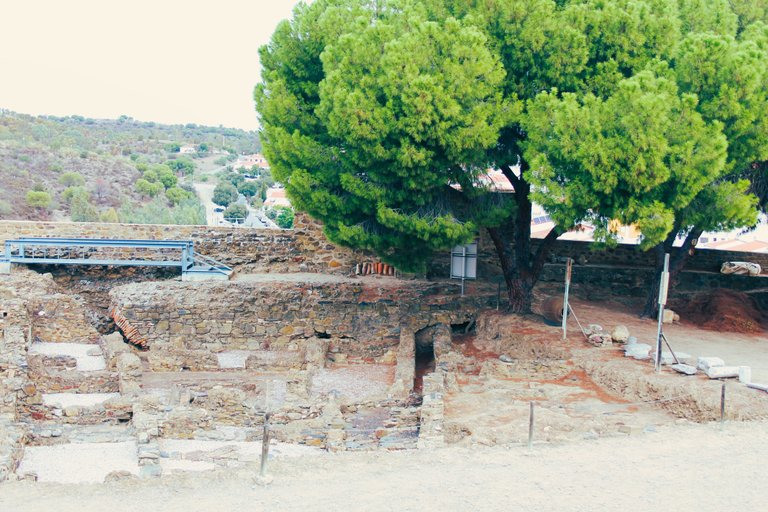

Before the conquest of the Moorish territory by Do Henrique's troops, this entire territory was the place where an Islamic neighborhood was built with approximately 20 houses, the characteristics of all the houses included that Mediterranean architecture: (around a patio there is organized a construction with a kitchen, several or a storage area for probably cereals, a toilet area with a latrine and finally a main area that normally had one or two beds, the most incredible thing about this Ismalic neighborhood is that it followed the principle of Roman architecture had a drainage system which kept the neighborhood clean and free of diseases!🌏🚩🚙
antes de la conquista del territorio Moro por las tropas de Do Henrique todo este territorio fue el lugar donde se construyo un barrio islamico con aproximadamente 20 casas, la caracteristicas de todas las casas comprendian a aquella arquitectura mediterranica: (a la vuelta de un patio se organiza una construccion con una cocina, varias o una area de almacenamiento de probablemente cereales, un area de aseo con letrina y por fin un area principal que normalmente tenian una o dos camas, lo mas increible de este barrio ismalico es que siguio el principio de la arquitectura romana tenian un sistema de desague lo que mantenia el barrio limpio fuera de enfermedades!
👨🏫🙇♂️🏰
https://andalfarad.com/barrio-islamico-de-mertola-portugal/

Houses I and II🙇♂️🚩/ Casas I y II🌏🧠🚙

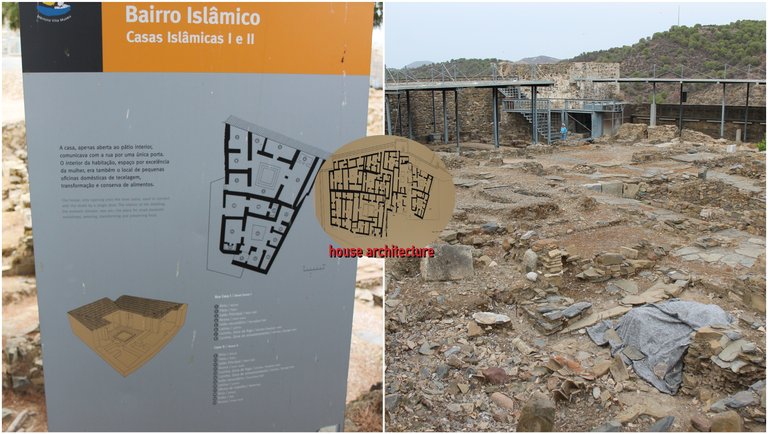
The house, barely open to the interior patio, communicated with the street through a single door. The interior of the room, which was the space of excellence for women, was also a place for small weaving offices, a very popular Islamic practice, also in this one. area where food preservation could be carried out, here we can see in the photo what the house looks like inside on an architectural plan!🙇♂️👨🏫🧠
La casa apenas abierta al patio interior se comunicaba con la calle por una unica puerta, el interior de la habitacion el cual era el espacio de excelencia para la mujer era tambien un local de pequeñas oficinas de telaje una practica muy popular islamica, tambien en esta area se podia realizar conservacion de alimentos, aqui podemos ver en la foto como es la casa por dentro en un plano arquitectonico!🏰🧭🧔

To understand the activities and routines of the Islamic people within the neighborhood, it is necessary to study all the objects found since the excavations were carried out. For example, many stones have been found that have a hole in the middle that were possibly used to work with grains and cereals, However, the same structures could be used for fishing or as support for structures! Clearly the Islamic people teach us that their main activity was agriculture since silos were also found in the land where cereals were stored in winter.👀🧭
Para comprender las actividades y rutinas de los islamicos dentro del barrio se necesita estudiar todos los objetos encontrados desde que se hacen excavaciones, por ejemplo se han encontrado muchas piedras que tienen un orificio en el medio que posiblemente eran utilizadas para trabajar con granos y cereales, sin embargo las mismas estructuras podian emplearse para la pesca o como soporte de estructuras! claramente los islamicos nos enseñan que su principal actividad era la agricultura pues tambien se encontraron silos en la tierra donde se almacenaban los cereales en invierno.👀🚩

A neighborhood on Roman ruins🙇♂️🚩/ Un barrio sobre ruinas romanas🌏🧠🚙
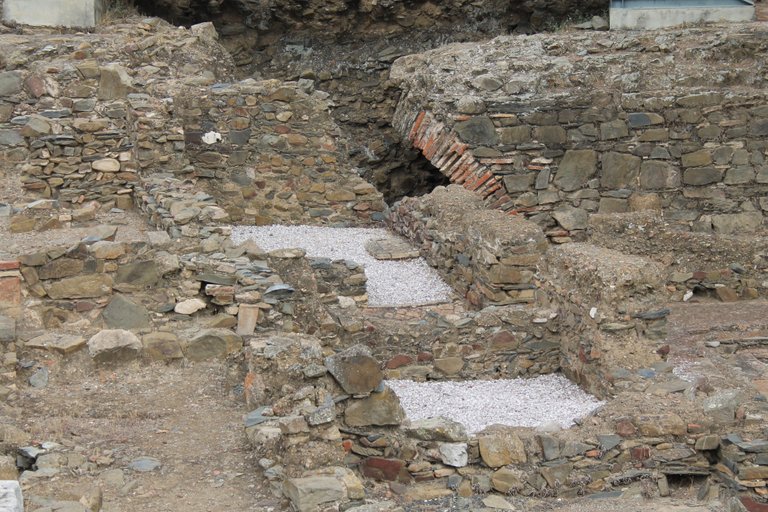
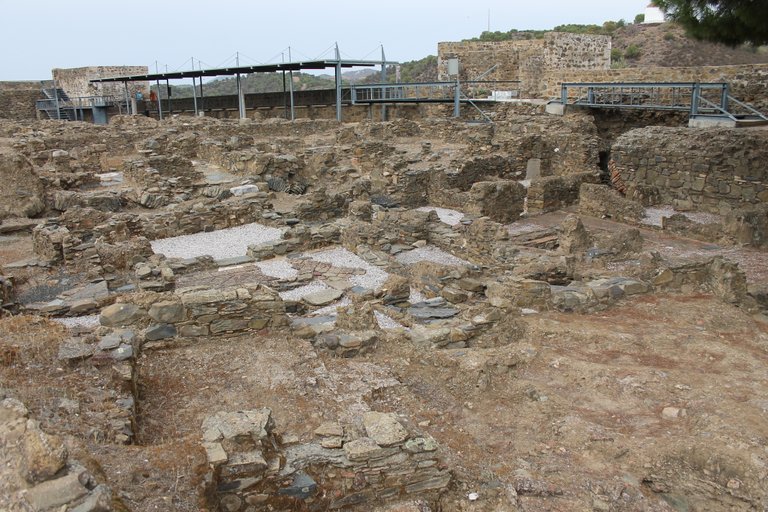
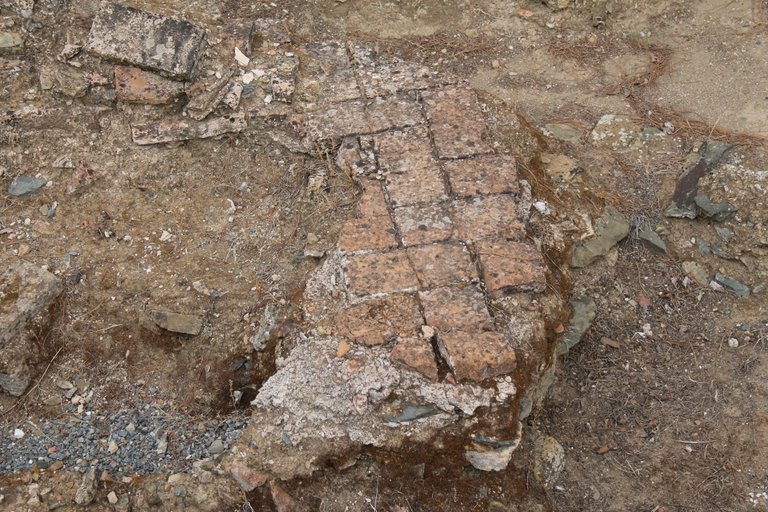
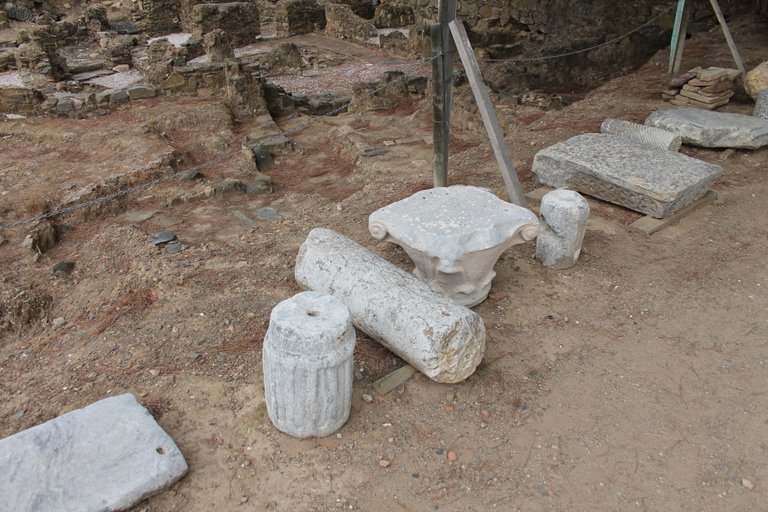
Portuguese archaeologists have found remains of Roman structures such as pillars or remains of the drainage system, this indicates that the Islamic neighborhood was built on a Roman city. It also indicates that the houses took advantage of the bases of the Roman walls to create new structures!🏰👨🏫🙇♂️
Los arqueologos Portugueses han encontrado restos de estructuras romanas como pilares o restos del sistema de desague, esto indica que el barrio islamico fue construido sobre una ciudad Romana tambien nos indica que las casas aprovecharon las bases de las paredes romanas para crear nuevas estructuras! 🚩🌏👨💻

What was an Islamic house like?🙇♂️🚩/ Como era una casa islamica?🌏🧠🚙


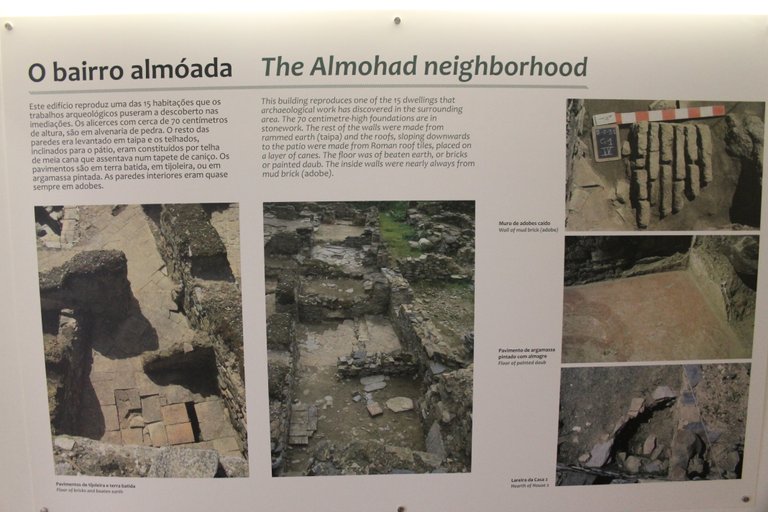
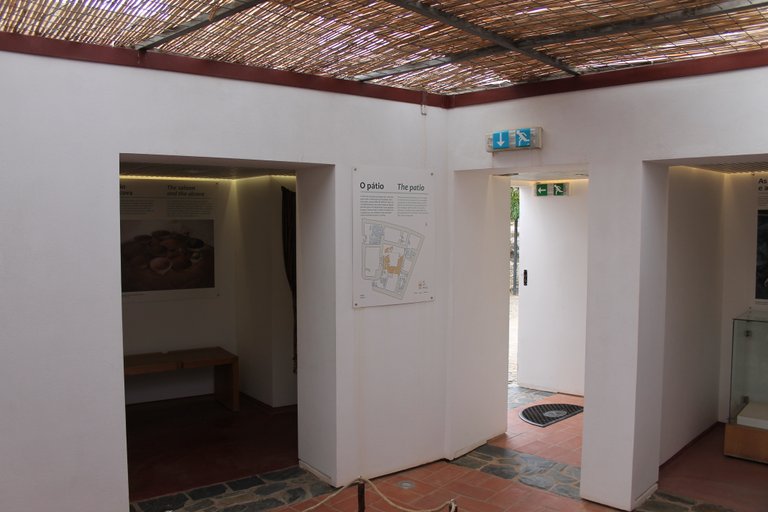
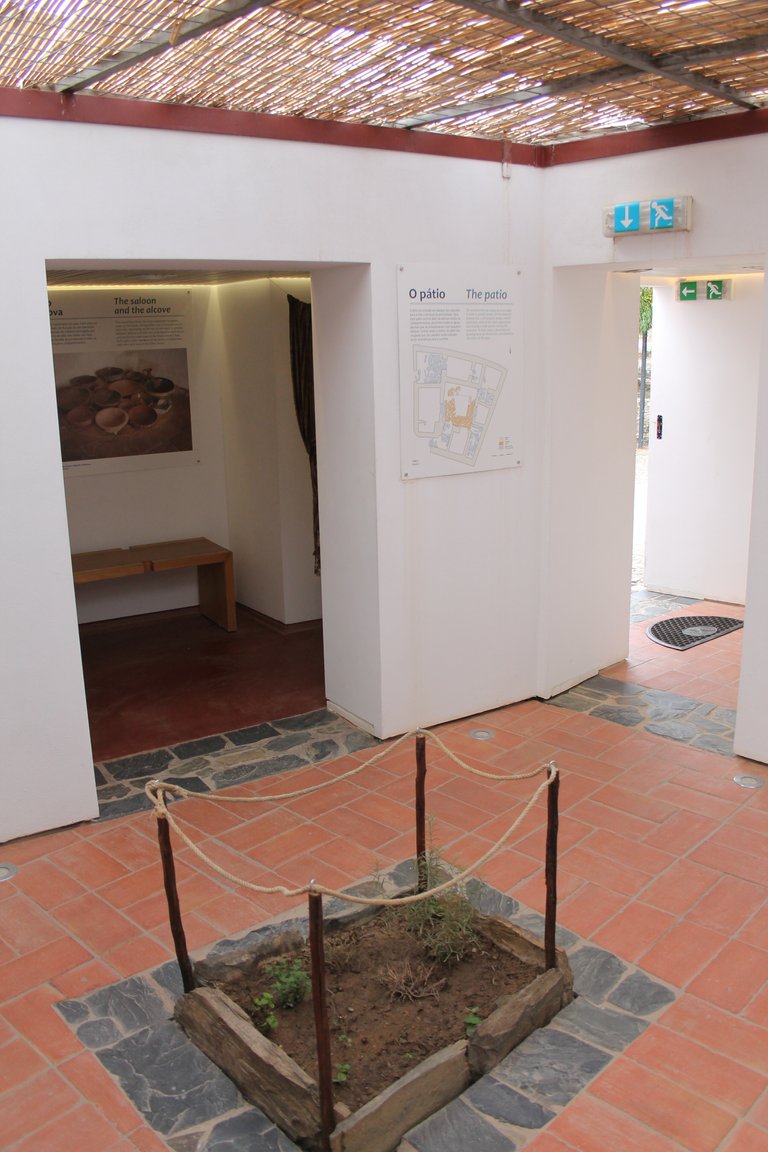

This area is fantastic because it recreates one of the 25 houses that were once in perfect condition before falling to the Portuguese empire. In each area there is an explanation that teaches us what an Islamic citizen did on a daily basis, as you can see. In a corner with some stones they cooked, the bed made of wood seemed comfortable for that height. The Moors mastered the art of weaving very well, which is why we see "sheets", curtains, and many things created with fabric, there are also some jugs that They were used for basic needs. If I'm not mistaken, the bathroom did not communicate with the drainage system. On the contrary, they had to manually send feces or other waste to the outside where a system of channels passed that did function as "pipes."👨🏫🙇♂️
Esta area es fantastica porque recrea una de las 25 casas que alguna vez estaban en perfecto estado antes de caer por el imperio Portugues, en cada area existe una explicacion que nos enseña lo que hacia un ciudadano islamico en su dia a dia, como puedes ver en una esquina con algunas piedras se cocinaba, la cama realizada con madera parecia comoda para esa altura los moros dominaban muy bien el arte de telar por lo que vemos "sabanas", cortinas, y muchas cosas creadas con tela, tambien hay unas jarras que servian para las necesidades basicas, si no me equivoco el baño no se comunicaba con el sistema de desague al contrario debian despachar manualmente las heces o otros despercidios al exterior donde si pasaba un sistema de canales que si funcionaban como "cañerias".🧠🧔🧭

Deities and temple🙇♂️🚩/ Deidades y templo🌏🧠🚙
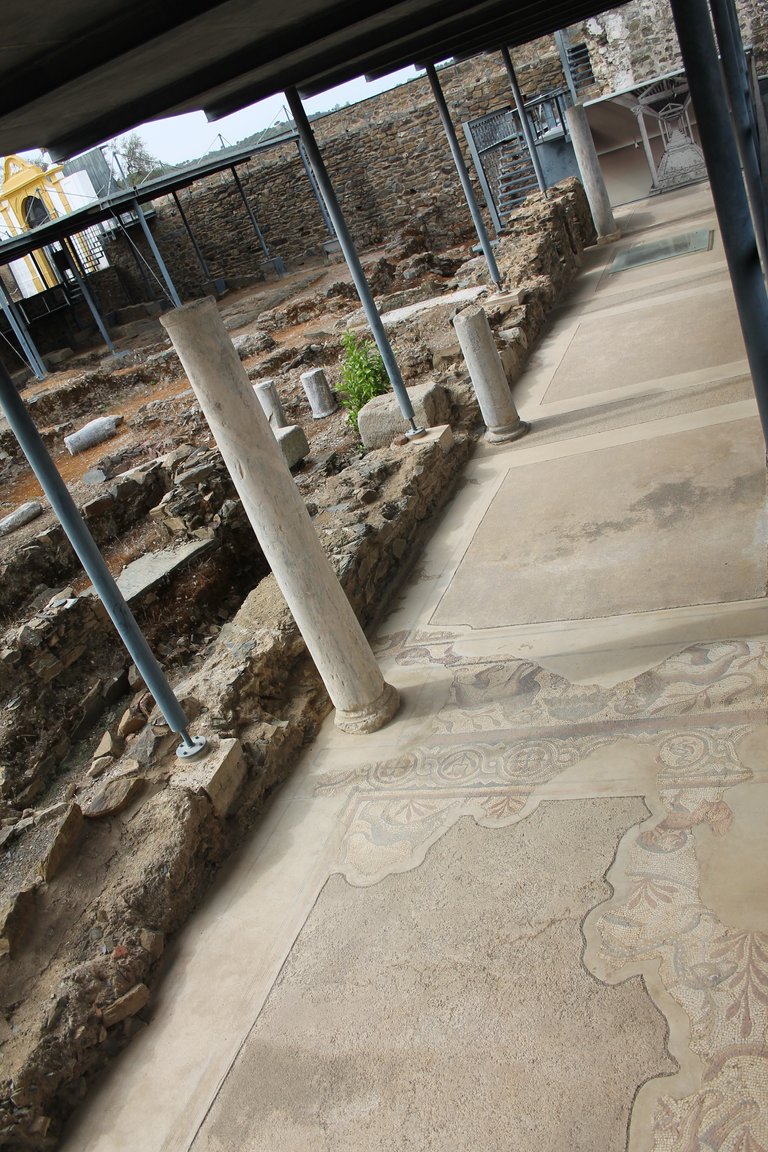
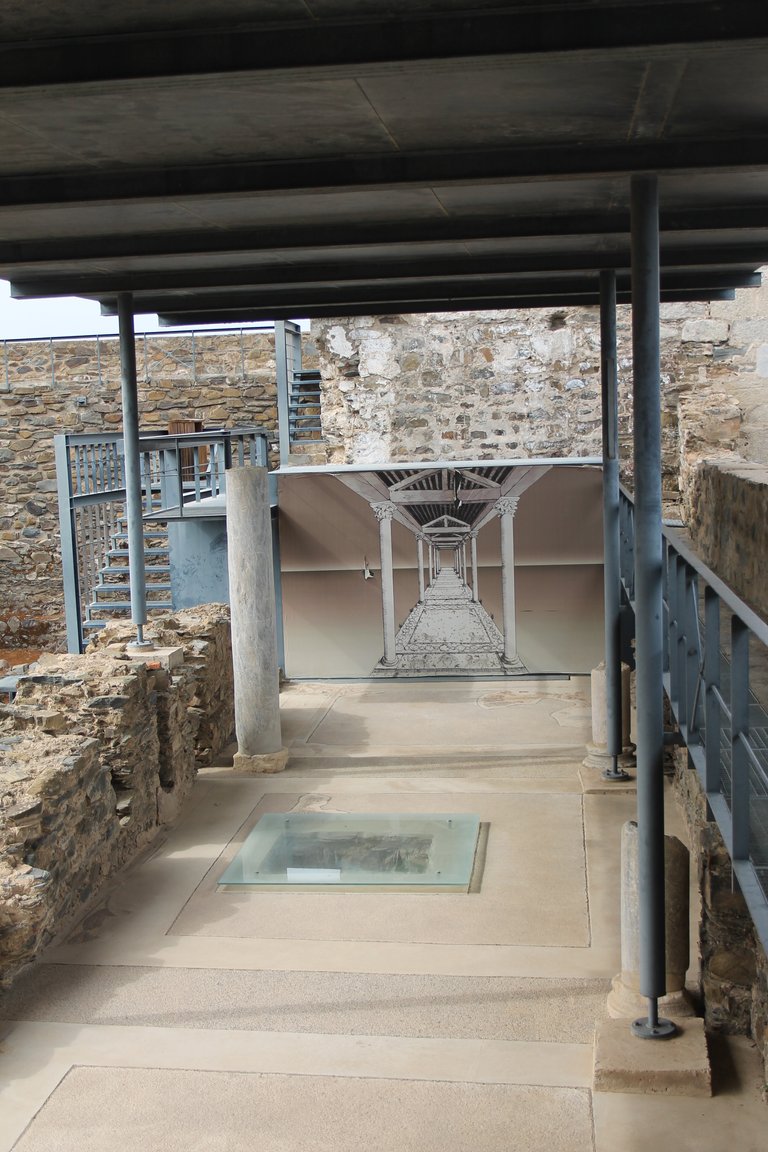

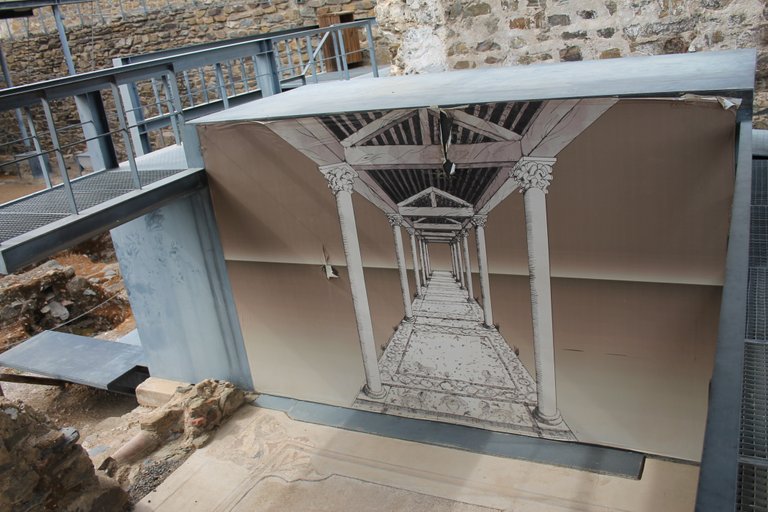
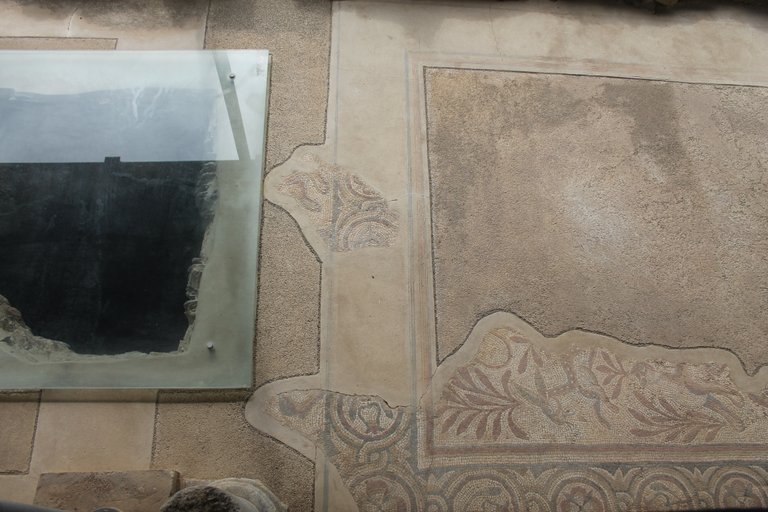
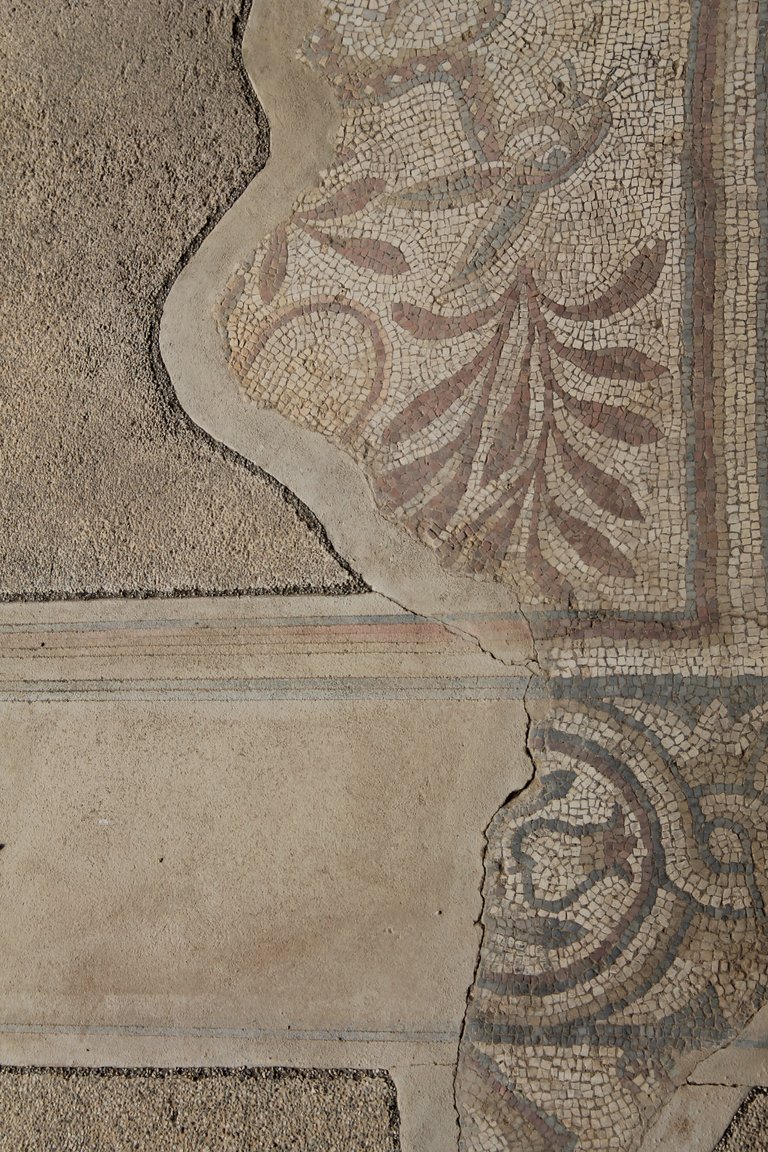
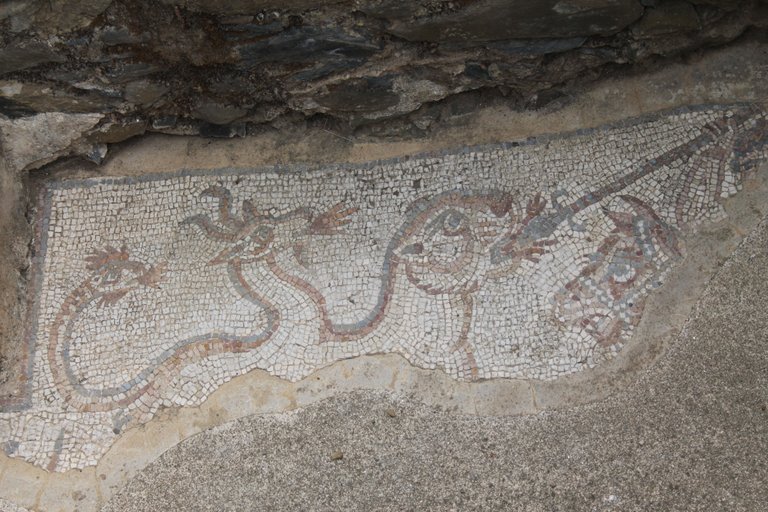
On the vault of the cryptoportico built in the middle of the 5th century after Christ, this epicospal palace was built where some Islamic cults were probably carried out. It is incredible how the corridor was supported by columns and there was a "ceiling", the floor was decorated with rugs and mosaics that featured some "mythological" figures or wild African animals! From deer to leopards and even a hare, this theme is very difficult to find in the Mediterranean and seeing one in perfect condition is incredible!🧠🙇♂️👨🏫
Sobre la bóveda del criptoportico construida a mediados del siglo V despues de cristo se construyo este palacio epicospal donde probablemente se realizan algunos cultos islamicos, es increible como el corredor se sostenia por columnas y existia un "techo", el suelo estaba decorado por tapetes y mosaicos que presentaban algunas figuras "mitologicas" o animales salvajes africanos! desde venados hasta leopardos e inclusive una liebre, esta tematica es muy dificil de conseguir en el mediterraneo y ver una en perfecto estado es algo increible! 🌏🚩🏰

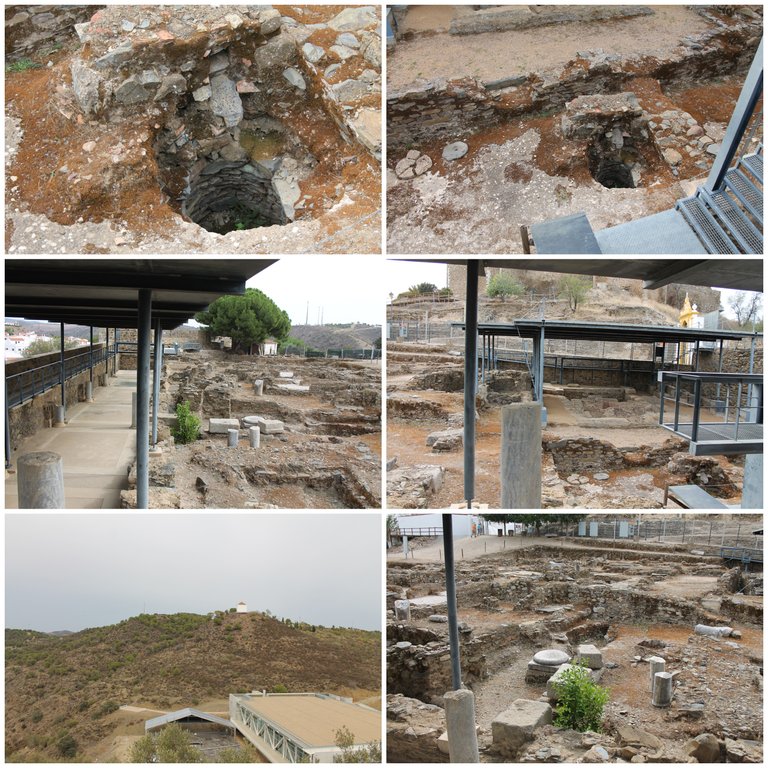
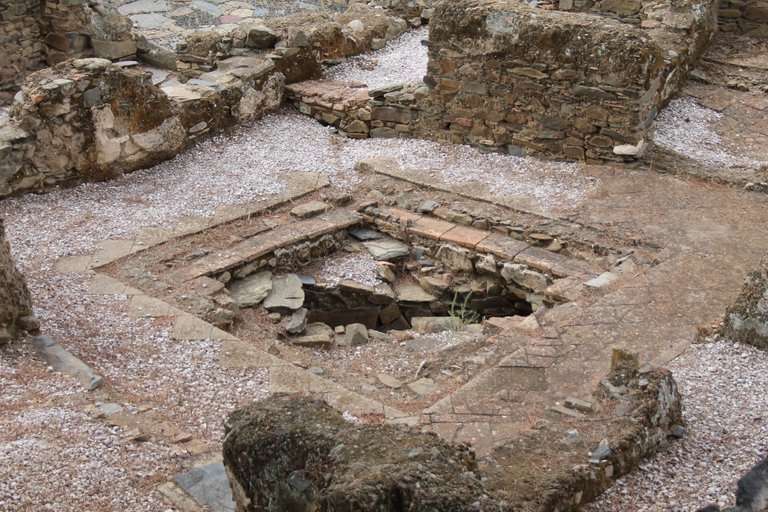

The alleys were very narrow and the houses were approximately 82 square meters. It is estimated that 4-6 people lived in each house. The construction material was Xisto stone, which was very common in the area. Mud was used to join the stones. and cal, the Romans who inhabited the area are believed to have been between the years III-IV after Christ. As a curious fact, each house in the center of its patio had a system to collect rainwater.🧠🧭🧔
Los callejones eran muy estrechos y las casas tenian aproximadamente 82metros cuadrados, se estima que en cada casa vivian 4-6 personas, el material de construccion era de piedra de Xisto lo cual eran muy comun en el area, para unir las piedras se usaba barro y cal, los Romanos que habitaron el area se cree que fue entre los años III-IV despues de Cristo, como dato curioso cada casa en el centro de su patio tenia un sistema para recoger el agua de la lluvia.🚩🚙

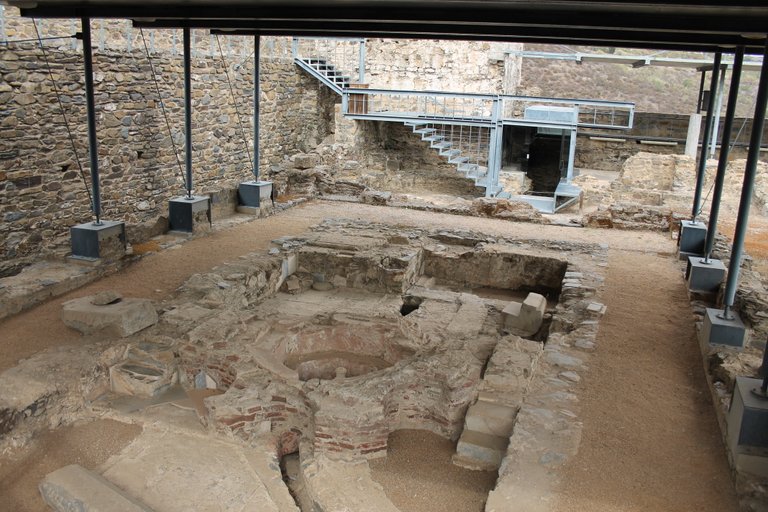

DNA is an organization to foster and DENSIFY NATURE-APPRECIATION which aims to establish REPORTS OF BIODIVERSITY DATA that is contributed by all of us Hiveans and subsequently cataloged.
Therefore DNA searches for HIGH-QUALITY posts that aim to DESCRIBE and determine the BIODIVERSITY AROUND YOU with added EXPLANATIONS and INFORMATION. For these informative posts they offer a CURATION SERVICE using the @dna.org account. It is also a CURATION TRAIL. Just add the #dna TAG if you think that any of your posts is what they are looking for.
THANKS FOR READING ME (PHOTOS, AND INFORMATION OF MY PROPERTY) / GRACIAS POR LEERME FOTOS, E INFORMACION DE MI PROPIEDAD🙂🧠🦾👍








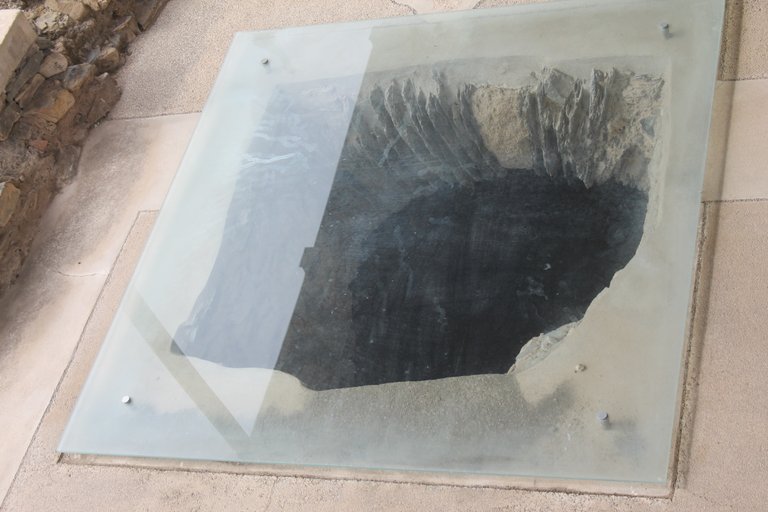
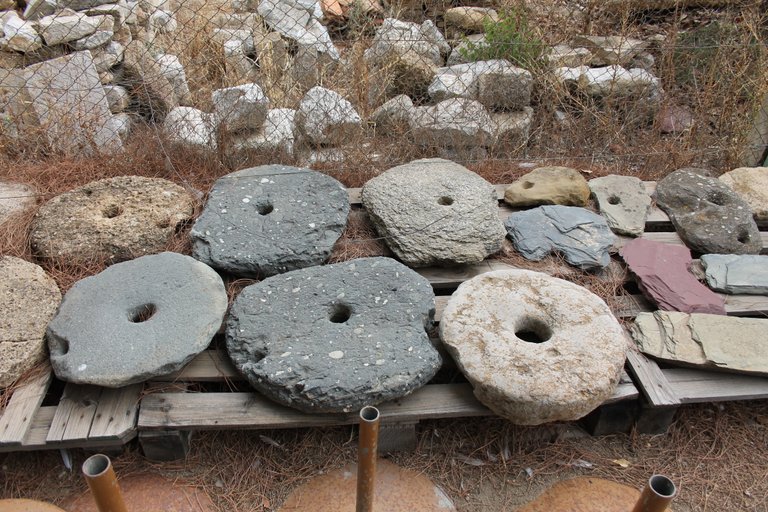



























Congratulations, your post has been added to Pinmapple! 🎉🥳🍍
Did you know you have your own profile map?
And every post has their own map too!
Want to have your post on the map too?
Yay! 🤗
Your content has been boosted with Ecency Points, by @biologistbrito.
Use Ecency daily to boost your growth on platform!
Support Ecency
Vote for new Proposal
Delegate HP and earn more
Thanks for your contribution to the STEMsocial community. Feel free to join us on discord to get to know the rest of us!
Please consider delegating to the @stemsocial account (85% of the curation rewards are returned).
You may also include @stemsocial as a beneficiary of the rewards of this post to get a stronger support.